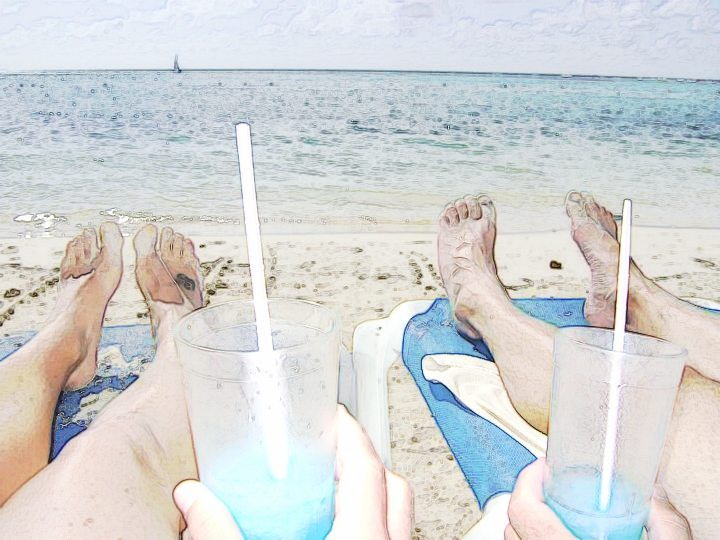I love summer. I love the sunny days, the sound of the happy birds in the morning, growing tomatoes in my back yard, and playing outside with my family. Beach or mountains – I’m 100% beach. Sunshine or snow? 100% sunshine, palm trees, sand, and the beautiful sound of waves crashing as the salty breeze cools my face. Summer just makes me happy. In good ol’ NC, summer also means toasty temperatures and lots of humidity. If you’re headed outdoors to play, be sure to consider the following summer safety tips:
- Listen to your body and know the symptoms of heat stroke:
- Fainting
- Throbbing headache
- Dizziness and light-headedness
- Little or no sweating despite the heat
- Red, hot, and dry skin
- Muscle weakness or cramps
- Nausea and vomiting
- Rapid heartbeat, which may be either strong or weak
- Rapid, shallow breathing
- Confusion, disorientation, or staggering
- Seizures
- Unconsciousness
If you suspect heat stress or stroke, seek cooler temperatures immediately and find someone to help you. If you witness someone with symptoms of heat stroke, call 911 immediately and move the person to an air conditioned space or shady area and remove any unnecessary clothes. Fan the person, apply a cool, damp cloth to their head, neck, arm pits, or back. Heat stroke is a life threatening condition.
- Wear sunscreen. The American Academy of Dermatology recommends a sunscreen with an SPF of 30 or higher should be applied every 90 minutes to 2 hours you are in the sun and more frequently when you’re in the water or sweating. Keep in mind, sunscreen may be sweat/water resistant, not sweat proof/water proof. (Sunscreen companies are no longer even allowed to label their products as such.) The thicker the better. Sprays are also great, but tend to come off more quickly. Hats are also excellent sources of shade for the face/neck.
- Wear sunglasses to protect your eyes. Choose a pair of lenses that block 99-100% UVA/UVB rays. If you’re driving with your sunglasses, gray, green, or brown tinted lenses to reduce color distortion and make it easier to see traffic light changes than pink or yellow tints. Polarized lenses help reduce glare and are great if you spend a lot of time on/near the water or driving, however, they do make reading screens more challenging.
- Respect the water. We have tons of gadgets and floatation devises for kids these days, but be sure not to get too comfortable with that puddle jumper at the pool or lifeguards watching your children. Keep in mind your children are one of a whole pool of people to watch. Wear a life preserver while boating. While you don’t anticipate your baby jumping overboard for a swim, you never know what might happen. My 15 month old and I flew out of a boat a couple years ago due to a bizarre freak incident. Long story super short: the steering cable snapped and our boat did an unexpected 360 as we were headed home from an outing. I was bruised and really sore, but my little guy popped right up to the surface of the water with the most beautiful, unscathed cry I ever hope to hear. His life preserver saved his life.
- Exercise inside when it’s above 90 degrees. Love to exercise outside? Get it in early or later in the evening when temperature is not at its peak for the day and/or stay in the shade. If you’re workout time is mid-day, workout in the air conditioner or pool to stay cool.
- Drink plenty of fluids. Make sure you are hydrated when you start your workout by drinking plenty of non-caffeinated beverages 1-2 hours prior and continue to sip fluid during and after exercise. If you’re really sweating, you may need to include electrolytes in your fluids during and after your workout.
- Wear technical clothing made for exercising the heat. Cotton tends to hold sweat which can make you feel hot. Cotton also increases the chances of chafing. (I’m not going to go into chafing a ton today, but Body Glide, Baking Soda, or Baby Powder can be life savers if this tends to be one of your summer-time troubles.)
Safety first to helps keep those fun summer memories fun! Check back on August 6th , for Summer Sweatin’ Part II for tips on cooling down after your workout.


